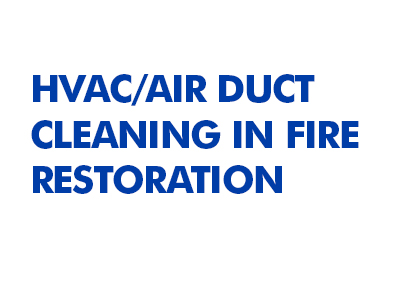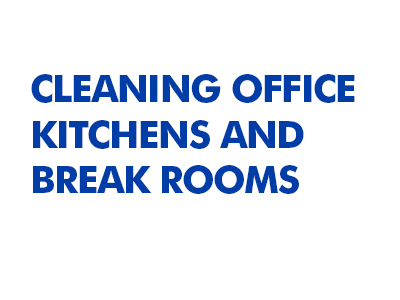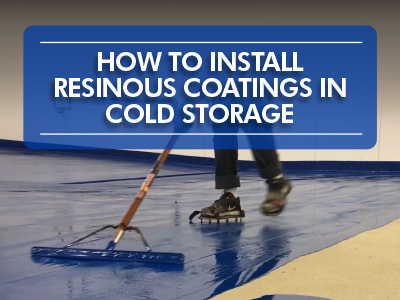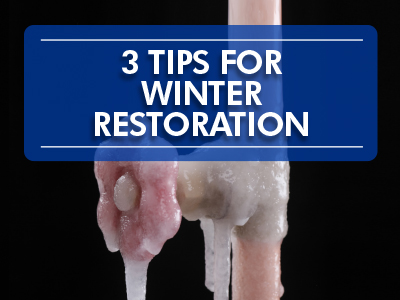Water damage can happen year-round in both commercial and residential areas, but during winter months, cold temperatures add extra complexity and risk. Low temperatures, ice, and snow can cause frozen pipes, ice dams on roofs, and frozen gutters. Leaky water heaters and condensation on ceilings, walls, and windows can also lead to water damage.
Technicians may find themselves working in structures with no heat or spending time setting up equipment outside in the elements. When called to work on cold weather job sites, restoration and remediation professionals must make sure they take the proper precautions to protect the health and safety of all involved.
In the following article, our experts recommend the top things restoration pros should do to protect people, their equipment, and their job sites during winter.
WINTER TIP #1 - PEOPLE PROTECTION
CLOTHING:
If you or your employees are heading out into the cold, make sure that everyone dresses in appropriate winter clothing to protect their skin and extremities. Dress in loose-fitting layers, wear a hat, and have a good pair of leather or driver gloves.
HAND/FOOT WARMERS:
Keep hand and foot warmer packs in your vehicle. These single-use disposable packs come in handy during emergencies, such as vehicle breakdowns on the side of the road or when working in job sites with no heat.
TAKE BREAKS:
If you're going to be working outside for extended periods or have a job where your equipment will be outside, be sure to schedule rest time/breaks when you can go inside and warm up.
WINTER TIP #2 – EQUIPMENT PROTECTION
TRUCK MOUNT:
Water that freezes and expands inside the heat exchanger, pump, or solution lines can cause severe damage to your truck mount. When using your truck mount on a job, ensure that the vehicle interior stays warm either by keeping the truck running with the heat on or by using a portable electric heater. CAUTION: Never leave your truck mount running inside a garage—even with the door open! Carbon monoxide from the engine exhaust can lead to death in minutes.
DEHUMIDIFIER:
PURGE THE PUMP
Make sure all liquid is fully drained from your dehumidifier by purging it at the end of a job. This is especially important if your equipment will be stored in a vehicle overnight or in an unheated trailer or garage. Liquid that isn't removed can freeze and expand, which leads to cracks and damage to the pump.
Here are the steps our experts recommend to ensure there's no or minimal moisture left in your machine:
- Upon completion of a job, purge the pump in your dehumidifier following the instructions from within your user manual.
- Turn off the dehumidifier, but leave it plugged in. At this point, the coil is likely still cold, so residual moisture can fall off the coil and collect in your pump.
- Allow the dehumidifier to defrost for 15–20 minutes. During this time, we recommend gathering the rest of your equipment, cleaning your work area, or wrapping up with the client.
- Purge the dehumidifier one last time.
CHANGE THE FILTERS
To optimize performance, always use a clean air filter in your dehumidifier. When the filter is dirty or clogged, your machine has to work twice as hard to pull air through. To reduce the strain on your machine and ensure maximum efficiency, replace the air filter often.
MOISTURE METER
To ensure accurate readings, you should allow your moisture meter time to acclimate to the temperature at the job site, especially if your meter has been sitting in the back of a cold van.
Trying to take measurements in a 70°F home after sitting in a 40°F vehicle can lead to inaccurate readings and poor results. Give your moisture meter 10-15 minutes to acclimate to the environment before use.
PRO TIP: High-quality moisture meters or thermo-hygrometers typically offer improved response time over cheaper or lower-quality tools.
FLOOD PUMPERS / PORTABLE EXTRACTORS
As we’ve previously covered, leftover water inside any machine during winter can lead to severe damage. Water expands as it freezes, causing cracks in solution or waste tanks and pumps.
At the end of every job, make sure all the water from your flood pumper or portable extractor is fully drained.
WINTER TIP #3 – JOB SITE PROTECTION
INVEST IN ELECTRIC HEATERS
Refrigerant dehumidifiers lose effectiveness in temperatures below 70°F, so contractors must find ways to raise the ambient temperature and improve the performance of the equipment. This could be as simple as raising the temperature on the thermostat.
However, if there's limited heat within the job site, either because the furnace is not working or the heat is not vented to the work area, such as in a crawlspace or basement, consider investing in portable electric heaters.
PRO TIP: Watch for condensation on walls or cold surfaces. When warm humid air meets cold surfaces condensation forms. This reinforces the need for proper dehumidification to remove moisture from the air and reduce the dew point temperature.
USE PORTABLE GENERATORS
If there's no power to the structure, you may need to use a portable generator to power your equipment. A common mistake some contractors make is not knowing the generator’s run time. If your generator only has an 8-hour run time, you need to plan ahead to ensure you can refuel it when needed (even at one in the morning!). Otherwise, your equipment will shut off and you'll lose hours of productivity.
NOTE: Always run your generator outside or in an area that is properly ventilated. Never run any combustible device without proper ventilation.
CONSIDER DESICCANT DEHUMIDIFIERS
Though desiccant dehumidifiers are not as effective as refrigerant dehumidifiers, colder temperatures don't impact them. In environments where cold temperatures cannot be raised and dehumidification is needed, a desiccant dehumidifier may be your best option.
PROPER DISPOSAL OF WET MATERIALS
If the job requires you to dispose of wet materials, such as carpet and padding, give careful consideration to how those materials are put out for disposal. You don’t want to leave a roll of wet carpet at the curb in below-zero temperatures, as it will freeze. The local garbage collectors may not appreciate or simply refuse to haul away heavy, frozen debris.
Be sure to use the appropriate bags to dispose of wet waste materials. If needed, arrange for a dumpster or scheduled trash pickup.
PACK ICE MELT AND A SHOVEL
You may not be able to rely on the elderly couple who has a flood in their home to put down ice melt or shovel the walkway.
Keep a bag or two of ice melt in your vehicle to help melt any ice on the driveway or footpaths. Always ask permission from the property owner before you spread any ice melt on the concrete.
A small shovel will come in handy if you need to clear snow. This will not only make it easier for you to move your equipment in and out of the job site, but the client will appreciate it as well.
Real-World Knowledge You Can Trust
For more tips and free advice for restoration and remediation work in cold environments, the expert team at Jon-Don is here for you. With years of real-world knowledge and field experience, we stand ready to help you tackle your toughest jobs.
Call your Jon-Don rep today at 800-556-6366.
About the Author
Andy Robinson is the Remediation & Technical Safety Manager at Jon-Don with more than 25 years of experience in the restoration industry. As a critical member of Jon-Don's Hurricane Response Task Force, Andy has been part of Jon-Don's front-line hurricane response for countless major weather events throughout the years, providing essential "boots on the ground" guidance and support to the team. Andy holds a number of industry certifications, including WRT, ASD, FSRT, AMRT, MRS, CCT, CDS, and E3 Drying Academy.















Comments